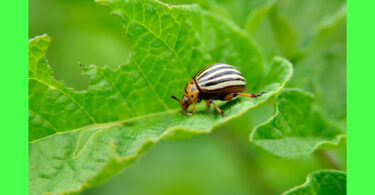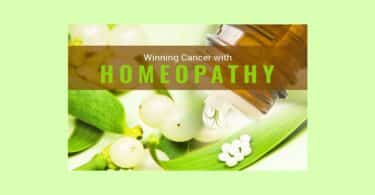Since its founding by Hahnemann around two hundred years ago, practical homeopathy has developed different faces.
The unresting spirit of Hahnemann, capable of tearing down edifices, which succeeded in shaking the very foundations of established medicine, deserves unreserved acknowledgement by all therapists working with homeopathic drugs.
This article discusses the homeopathic system of complex remedies, its history and how it is practiced at PASCOE Pharmaceutical Preparations Plc., a company in business for 80 years.
———————————————
From the beginning, some practicing homeopaths tried to adapt classical homeopathy according to their own therapeutic claims.
Reasons for this primarily were:
- the enormous requirements for memory performance and experience
- the time needed which cannot always be spent
- the appearance of diseases for which not all of the symptoms are covered by one single remedy
- increasing presence of blocking factors (intoxications, focuses, radiations) and, quite essentially: the practical success with the modified methods.
The points mentioned on the one hand led to the combination of several remedies, and on the other hand to the combination of homeopathy with other natural medical therapeutic methods.
Good ideas only gain acceptance when they prove themselves in practice and homeopathic combination remedies have proved themselves. Therapists like Lutze and Felke, whose reputation was so good that they saw thousands of patients, moved on to successfully combine remedies according to well approved indications.
The first beginnings of the combined dose of single remedies goes back to the contemporaries of Hahnemann, who even succeeded in convincing Hahnemann of their usefulness. Hahnemann wrote to Aegidi after being informed by him about his experiences with double remedies: Do not think that I am capable of rejecting any good thing from prejudice, or because it might cause alterations in my doctrine. My sole desire is for truth, and I believe yours is also. … Permit me, then, to give your discovery to the world in the 5th edition of the ‘Organon’, which will soon be published.
Only the well founded fears that supporters of the until then established medicine would judge this to be the first step towards the retreat of his conviction, prevented Hahnemann from actually integrating the double remedy aphorism in the 5th edition of the Organon in 1833. The article designed by Hahnemann, was for the first time included in the 6th edition by Lutze.
The development of the complex remedy systems established today did not run in a straight line. Different starting points led to different healing systems, e.g.
- The humoral pathological way of thinking,
- Spagyrics based on Paracelsus,
- Electro homeopathy by Matteis,
- The holistic view and
- The simple symptom orientated view according to approved indications.
Pastor Felke and his students
Let us pursue Pastor Felke’s method of developing complex remedy systems. Felke lived from 1856 until 1926 and worked as a parish priest and therapist at different places (Cronenberg, Repelen, Bad Sobernheim). He disregarded dogma and connected different medical and alternative methods of healing: particularly he connected homeopathy with the elements water, earth, light and air and with their therapeutic modes.
The original health cure by Felke consisted of sleeping in airhuts, gymnastic physical exercises out in the fresh air, hydrotherapy, water cures, an individual diet and loam baths (therefore: loam pastor). He considered homeopathy the backbone of his whole method, to which he affiliated everything else later. His view about the emergence of illnesses originates from humoral pathology: The appearances of diseases to him were signs of “spoiled blood”. Therefore he gave his attention essentially towards urging the body to eliminate foreign substances present in the blood.
Even today, draining off and removal are essential domains of complex homoeopathy in connection with the stimulation of individual organs. Many naturopathic therapists combine personotropic single remedies in high potency with complex remedies in low potency, which activate directly, for example, the lymphatic system, liver and/or kidneys. This allows the benefits of both therapeutic approaches.
According to Felkes experiences, a chronic illness had to be changed to an acute crisis prior to cure. While he was a “true Hahnemannian” in acute diseases, he combined different homoeopathic single remedies into complex remedies in chronic illnesses. He added to his recommended therapy, instructions for an individual course of treatment. He had observed frequently, that for many diseases the same focal strains arise. He created more than 100 formulae for complex remedies with a different main focus for each, to match the most frequent sufferings. In his selection of remedies he also considered constitutional aspects, iridology, typical strains of organs, his own experience and a good scrap of intuition.
The principle of the simile was obeyed by Felte in so far as he compared the symptoms of his patients with the remedy pictures of single remedies. Since these comparisons always showed several remedies, he combined them and usually found similar combinations for isotypical diseases. His innumerable therapeutic successes made him very well known. Many who were interested in his method became his students, so that the healing method by Felke spread. It was mainly people joining Felke’s campaign who later became founders of medium-sized enterprises still existing today, which produce homeopathic complex remedies. Some of them are: Magdalene Madaus (Madaus), Heinrich Hense (Truw), Heinrich Reckeweg (Reckeweg) and Friedrich Pascoe (Pascoe).
Pascoe and the Similiaplexes
In 1896, Friedrich Pascoe (1867-1930) took over the pharmacy from Mellinghof in Mühlheim at the river Ruhr, to deal with the production of natural medicines. He worked together with Felke, whose formulas were produced in the pharmacy of Mellinghof. There were connections to and an exchange of experience with the well-known homoeopaths Zimpel, Mattei and Clerc. As a result, Pascoe was stimulated to carry out his own research. In 1919 in Giessen, he founded the company Pharmacist Friedrich Pascoe – Pharmaceutical Preparations (Apotheker Friedrich Pascoe – Pharmazeutische Präparate). In 1925, Pascoe came on the market with his first homeopathic complex system – the Pascoe-Complexes, which were the basis for the Similiaplexes, which were launched in 1961.
Similiaplexes today are a system of almost 80 homeopathic complex remedies consisting of 4-10 single remedies each. They are subdivided in 12 groups (examples: Skin remedies, liver-gall remedies, response remedies, scrofulosis remedies …).
There are different starting-points for remedy selection:
- Constitution and predisposition
- Partial repertorization
- Clinical results
- Symptomatic complex
Examples for the use of Similiaplexes for approved indications, i.e. purely symptomatic, are the acute remedies like Symphytum Spl. This is a complex homoeopathic preparation with the following effective components: Symphytum, Arnica, Hypericum, Calendula and Sanicula europaea – all added as mother tincture or in a very low potency. The approved spheres of application are obvious to any therapist who is experienced with the science of homoeopathy.
Another common method for the use of Similiaplexes is constitutional therapy. According to the experiences of many therapists, particularly Schimmel and Herget, Similiaplexes were assigned to certain body types and were sometimes determined with the help of Iridology.
These are the main groups
- lymphatic
- hematogenic
- dyscratic constitution, which can be further divided into more subgroups.
This allows for constitutional therapy, which is orientated to prophylactic treatment.
Similiaplexe can be used for a known inclination towards certain diseases (disposition) or for treating manifest diseases or symptoms according to the principle of the simile of the individual components of the preparation.
For the therapists, working with Similiaplexes is without doubt, simpler and more practicable than classical homoeopathy (with regard to the requirements of time, experience, education, …, as mentioned before). With a good background knowledge, therapeutic successes are more probable than from the inexperienced use of single remedies. If one wants to fully exploit the total potential of therapy with Similiaplexes, however, basic knowledge in homeopathy and constitutional therapeutic knowledge together with considerable experience are necessary as well.
Many homoeopathic complex remedies are more than the sum of the individual remedies: They are the result of the work of sometimes brilliant empiricists with very subtly differentiated intentions, combined with the experience of generations of therapists skilled in the art of healing.
It seems to be the ravages of time that fewer therapists compare the patient’s symptoms with the drug pictures of the individual components of a Similiaplex, selecting the individually suitable remedy this way. Aside from guidlines by the authorities, this may be the main reason, why the homoeopathic (single) remedies which are ‘only’ registered without given indications (according to § 38, German law relating to the manufacture and distribution of medicines, e.g. Similiaplexe), and which are invaluable in the hands of experienced therapists, are favoured over such complex remedies, (which have an officially authorized indication according to § 21, German law relating to the manufacture and distribution of medicines).
In the course of the years, more clinically oriented Similiaplexes were developed, which, in the frame of the proceedings of approval, became entitled to an indication. We can mention e.g. Antimigren *.
Antimigren *:
- Iris D3
- Gelsemium D4
- Cyclamen D4
- Paris quadrifolia D4
- Asarum europaeum D4
Here, the name already tells the corresponding indication.
A great advantage of these preparations, is that their efficacy against certain diseases can be proved by studies which meet the medical criteria OF evidence based medicine (see below: Clinical study of Antimigren*).
The objection that the prescription of homoeopathic complex remedies has little in common with the genuine methods of Hahnemann , certainly is justified. However, it is a fact (even if many therapists are no longer aware of it), that the selection of the remedies for a complex preparation very well satisfies the principle of the simile.
Also, it is important to emphasize, that the complex remedies make up a considerable share of the homeopathic medicines used today (often more than 89%), and that their comparably simple application promotes enormously the acceptance of homeopathy among both lay and allopathic professionals.
Without any doubt, the fact that complex homoeopathy has established itself firmly for over 100 years, suggests it is an efficient therapy. This could be proved also with different clinical effectiveness studies. An example is the preparation of Antimigren*. This is a homoeopathic complex remedy made from 5 low potency vegetable components (D3-D4).
Clinical study Antimigren* (8)
In 1999/2000 a double-blind, placebo controlled, randomized phase IV study was carried out at the Migräneklinik Koenigstein (Migraine Clinic Koenigstein) for identification of the effectiveness and tolerance of Antimigren* in migraine therapy.
Primary objective parameters were the diminution of severeness and frequency of migraine attacks. Secondary objective parameters were diminution of duration of migraine attacks and reduction of pain and migraine medicines.
Antimigren* drops or placebo were given in a dosage of 15 drops, 3 times daily over a period of 12 weeks.
The following results were achieved:
- continuous decrease of pain intensity (placebo: slight but continuous increase)
- further decrease of pain intensity even after treatment phase of 12 weeks
- continuous decrease of average pain duration from 7.7 to 6.4 hours during the 7th-12th week (placebo: increase from 6.7 on 8.6 hours)
- 23% of the Verum group could do without standard medicines (placebo: 4%)
- Physicians opinion: Complaints completely cleared or considerably reduced: 45% of the patients in the Antimigren* group (26% in the placebo group)
Result
Complex homoeopathy today is an essential component of most naturopathic practices and not only in Germany. Faithful to the motto “who heals is right”, it is a modified form of Hahnemannian homoeopathy. Complex remedy homoeopathy is based on empiricism and experience and it is particularly well-tried in prophylaxis as well as in multi-morbid events of chronic diseases (especially in geriatrics). Its essential advantages are usability and success even with only moderate homoeopathic knowledge by the therapist, clinical applicability and evidence of efficacy according to conventional medical criteria. Disadvantages are the insufficient consideration of deeper rooted problems, especially of the mental and miasmatic kind and that occasionally prolonged treatment with the preparation is necessary, which is harmless but unsatisfactory. In such cases practical experiences confirm that a composite use of single remedies and complex remedies can be successful.
Literature
- Clerc, A.: Die vereinfachte Medizin oder die Complexe Homoeopathie. H. Georg, Verlagsbuchhandlung Basel, 1892
- Droste, R.: Komplexhomoeopathie von Pastor Felke bis heute. Naturheilpraxis 3/2007
- Kenyon, J.: Die Medizin des 21. Jahrhunderts. Johannes Sonntag Verlagsbuchhandlung GmbH München 1990
- Liebau, K.F.: Zur Komplexhomoeopathie. Naturheilpraxis 02/2003
- Lutze, A.: Lehrbuch der Homoeopathie. Koethen: Lutze. 1860; Nachdruck: Heino Schirm (Hg.) 1978 München: Hieronymus (zitiert in Sahler (7))
- Pascoe-Kompendium. Therapeutisches Handbuch und Präparateverzeichnis. 2007, Pascoe pharmazeutische Präparate GmbH
- Sahler, A. M.: Homoeopathische Komplexmittel. Ihre historische Entwicklung, ihre Begründer und ihre gegenwärtige Bedeutung. Richard Pflaum Verlag, 2003
- Schauer, U.: Zusammenfassung der klinischen Studie Antimigren*. Pascoe pharmazeutische Präparate GmbH
- Schimmel, H. W.: Die klinische Komplexhomoeopathie. Der Versuch einer Definition. Acta biologica XXX/1, S.19, 1991
- Schimmel, H.: Ursprung und geschichtlicher Abriss der Komplexhomoeopathie. Acta biologica I/1 S. 5, 1962
- Stutz, E.: Komplexhomoeopathie: gestern, heute, morgen. Naturheilpraxis 3/2006
- Stutz, E.: Tief sind die Wurzeln der Komplexhomoeopathie. Naturheilpraxis 4/2004
Preparation informations
ANTIMIGREN®* ORAL DROPS
Ingredients: 100 g (=103 ml) contains: Pharmacologically active ingredients:Iris 3X 20 g, Gelsemium 4X 20 g, Cyclamen 4X 20 g, Paris quadrifolia 4X 20 g, Asarum europaeum 4X 20 g. Constituents 1 through 5 are potentized together through the last dilution/succussion step. 1 g corresponds to 33 drops. Contains 23 % (V/V) alcohol.
Indications: The indications are derived from the homeopathic drug pictures, these include headache and migraine.
Caution: Unclear, new or persistent symptoms require further medical evaluation.
Contraindications: Alcoholics. Because of the absence of experience: children under 4 years of age. During pregnancy and nursing period only after consulting a doctor.
Side Effects: None known. Initial aggravation is possible, stop the treatment and consult your doctor.
Presentation and Contents: Original bottles 50 ml and 100 ml of mixture.
Date of Information: October 2006
* This is the formula registered in Germany. In other countries the name and the formula respectively may deviate or there may not exist a registration for the product.
Author:
Bärbel Tschech (Dip. biologist)






